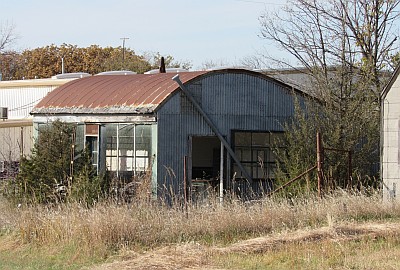 Two high school seniors in North Central Kansas are being recognized with the John R. Cyr Rural Voices Award for submitting the top entries in the 2018-2019 Rural Voices Youth Contest.
Two high school seniors in North Central Kansas are being recognized with the John R. Cyr Rural Voices Award for submitting the top entries in the 2018-2019 Rural Voices Youth Contest.
Students had the option to submit an original essay or video reflective of the contest theme — “Rural Kansas…My Community.” McKenzie Shippy, a senior at Herington High School, was awarded first place in the video category. Kara Eilert, a senior at St. John’s Catholic High School, Beloit, was awarded first place in the written category. Both students will receive a cash award of $850.
The awards are named in honor of John Cyr who served for 22 years as the NCRPC Executive Director. High school seniors in the 12-county NCRPC service area were eligible to participate. NCRPC has sponsored the contest annually since 2006 and has awarded more than $22,000 to seniors from across the region.
“The contest theme this year allowed high school seniors to reflect on their community and the value it has in their lives,” NCRPC Executive Director Doug McKinney said. “Community culture, whether it is a specific place or an overall feeling in a broader area, is important. Knowing how a community works and its strengths and opportunities is also important.”
Both students say they enjoyed participating in the Rural Voices contest.
“I loved the opportunity to be creative showing Kansas how my community has shaped me into who I am,” Shippy said. “This video was my way of giving back to Herington and Woodbine for all the support they have given me.”
“To me, rural Kansas is home, so I was very excited about the opportunity to write about what rural Kansas means to me and share my thoughts on how we can strive to keep our communities sought after places for individuals to call home,” Eilert said.
To view the top entries or to learn more about the contest, visit www.ncrpc.org/ruralvoices. Details for the 2019-2020 contest will be announced in the fall.
This article appeared in the March 2019 NCRPC Newsletter.

 The Community Development Block Grant (CDBG) program requires that each CDBG funded activity must either benefit low- and moderate-income (LMI) persons (at least 51% LMI), prevent or eliminate slums or blight, or resolve an urgent need where local resources are not available to do so.
The Community Development Block Grant (CDBG) program requires that each CDBG funded activity must either benefit low- and moderate-income (LMI) persons (at least 51% LMI), prevent or eliminate slums or blight, or resolve an urgent need where local resources are not available to do so. Helping make home ownership more affordable was one goal of the NCK Home Ownership Pilot Program that assisted home buyers this past year in Cloud and Mitchell counties.
Helping make home ownership more affordable was one goal of the NCK Home Ownership Pilot Program that assisted home buyers this past year in Cloud and Mitchell counties.